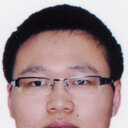Population pharmacokinetics and pharmacodynamics of caspofungin in pediatric patients.
Keywords
Abstract
We describe the pharmacokinetics (PKs) of caspofungin, an echinocandin antifungal, administered once daily as a 1-hour intravenous infusion in children and adolescents (ages, 3 months to 17 years), based on pooled data from four prospective pediatric studies. Caspofungin dosing was body-surface-area (BSA) based (50 mg/m2 daily after 70 mg/m2 on day 1). The area under the concentration-time curve from time zero to 24 h (AUC0-24), the concentration at the end of infusion (1 h after the start of infusion; C1), and the trough concentration (24 h after the start of infusion; C24) were obtained for 32 pediatric patients with invasive candidiasis, 10 with invasive aspergillosis, and 82 in the setting of empirical therapy with fever and neutropenia. Exposures were modestly higher (93 to 134% for C1, 45 to 78% for C24, ∼40% for AUC0-24) in pediatric patients than in adults receiving the standard 50-mg daily dose. The potential for covariates (age, gender, weight, race, renal status, serum albumin level, and disease state) to alter PKs was evaluated with a multiple-linear-regression model. Weight and disease state had statistically significant (P<0.05) yet small effects on caspofungin PKs in pediatric patients. Concomitant use of dexamethasone (a cytochrome p450 inducer) was associated with a statistically significant reduction (44%) in C24 in a limited number of patients (n=4). Odds ratios were estimated for the association between log-transformed PKs and treatment outcome or adverse events. No PK parameter or hybrid parameter (AUC/MIC, C1/MIC, and C24/MIC) was significantly correlated with treatment outcome or adverse events in the setting of similar response levels as adults, which suggests that the concentrations examined fall within the therapeutic window for caspofungin in pediatric patients. These results support a 50-mg/m2 daily dosing regimen (after a 70-mg/m2 loading dose) in children ages 3 months to 17 years.


